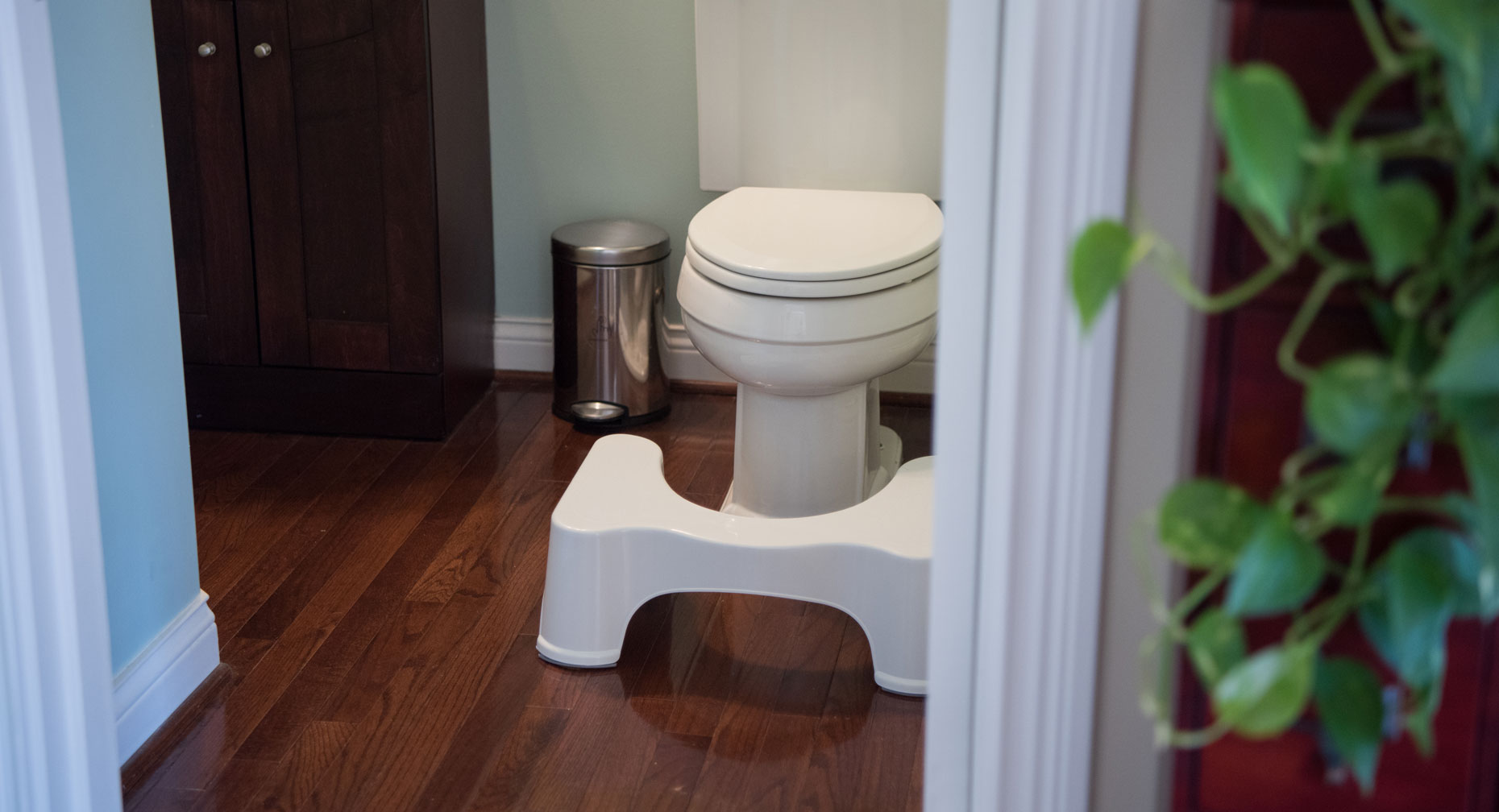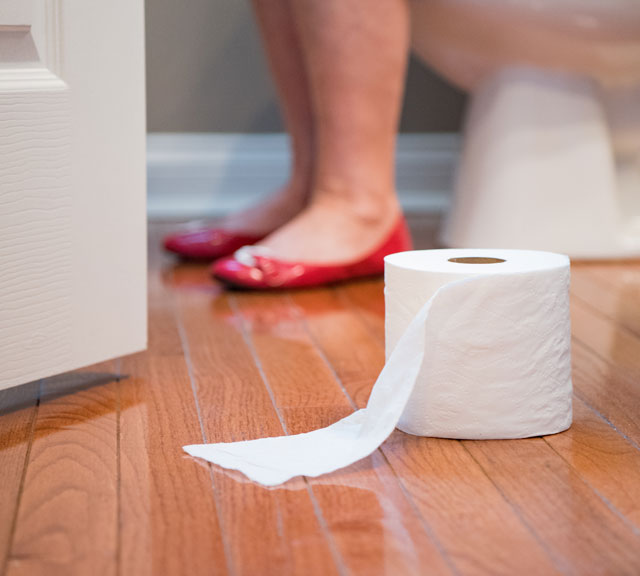Squatty Potty®: Gimmick or Game Changer?

Answer a few questions and we'll provide you with a list of primary care providers that best fit your needs.
Remember your mom getting on your case about your posture? “Sit up. Stand up straight. Stop slouching.” Well now, it appears you need to be aware of your toilet posture as well. Wait, what?
That’s right. Toilet posture. Enter the Squatty Potty®.
The product claims that the only natural defecation posture for a human being is squatting, and that doing so with the Squatty Potty can aid in better elimination. If you’ve ever had a bout of constipation, you understand the fascination with “having a good poop.”
So, does the Squatty Potty really work? Can it really help you achieve a faster and more effective elimination like its website says?
“There’s no proof one way or another how humans are supposed to have a bowel movement.”
How Does the Squatty Potty Work?
The Squatty Potty is a curved stool that nests against your toilet and elevates your feet, converting your “sitting” posture to a “squatting” posture. The resulting squatting position creates an easier pathway for fecal matter to travel by:
- Increasing the rectal canal angle
- Relaxing a key pelvic muscle
- Unkinking your colon
Better elimination may decrease constipation, straining, bloating and hemorrhoids, according to the Squatty Potty blog.
What Do Doctors Think About the Squatty Potty?

While the Squatty Potty cites medical research supporting the effectiveness of squatting for easier, less strained bowel movements, some experts believe the research is limited.
“They’re case studies and not large research with a lot of people,” explains Kenneth Reed, MD, Premier Gastroenterology Specialists. “There’s no proof one way or another how humans are supposed to have a bowel movement.”
Physicians acknowledge that the Squatty Potty does increase the rectal canal angle, which opens up the rectum. However, some people might have the right angle just by sitting and trying different toilet positions, Dr. Reed says.
“It’s really about getting the sigmoid colon (final segment of colon just before the rectum) to straighten out,” he explains.
In addition, many other factors — like diet, activity level, medications and overall health — influence the makeup of your stool and how easy it is to eliminate.
“Some peoples’ problems aren’t related to angle,” Dr. Reed says. “Some don’t have bulk, or their bowels are sluggish. Whether they’re in the right position or the moons are aligned, it still might not help.”
He recommends addressing these factors first to resolve constipation, potentially avoiding the need for an item like the Squatty Potty in the first place.
Who Might the Squatty Potty Help?
Dr. Reed says there’s no harm in trying the Squatty Potty if your elimination problems are mild. And it might also help people who strain during bowel movements.
“The good thing about it is that it’s not medicine. It’s not going to hurt you,” he says. “If it helps, great. If not, then you’ve only lost the cost.”
Whether you use the Squatty Potty, your own stool or simply sit on your toilet with feet on the floor, Dr. Reed reiterates the importance of contacting your doctor if you experience changes in your bowel movements. This is especially important if you’re in your 40s or 50s and have constipation.
Answer a few questions and we'll provide you with a list of primary care providers that best fit your needs.
Source: Healthline; Kenneth Reed, MD, Premier Gastroenterology Specialists, Premier Health





